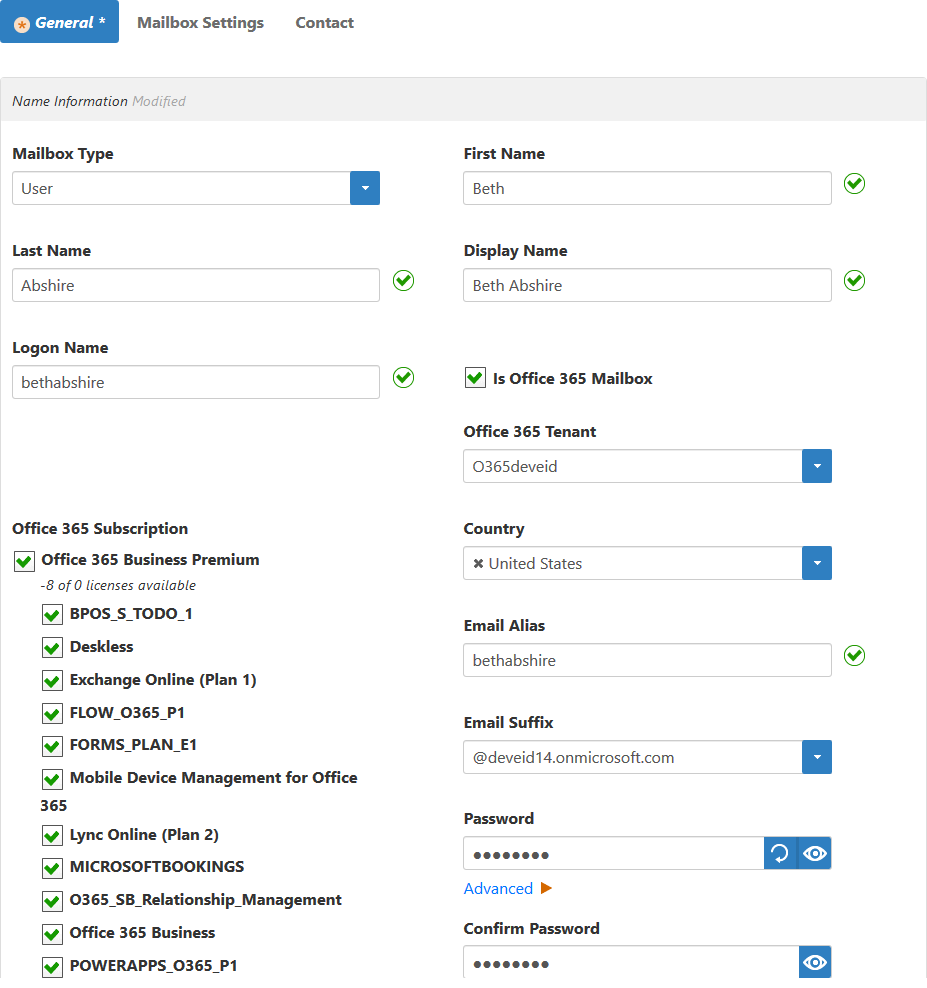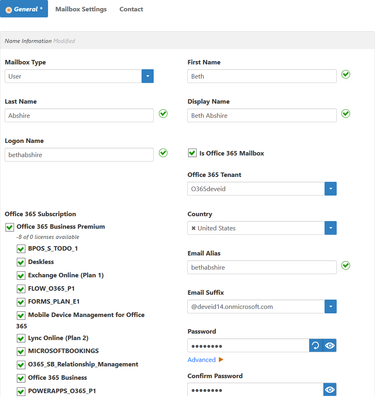Versions Compared
compared with
Key
- This line was added.
- This line was removed.
- Formatting was changed.
Home / Identity Administration / User Accounts and Groups / Office 365 / Current: Creating Licensed Office 365 Users
This topic demonstrates how to create licensed Office 365 users in EmpowerID.
| Info | ||
|---|---|---|
| ||
You must have a licensed corporate Office 365 account and connect EmpowerID to Office 365. |
To create a licensed Office 365 User in EmpowerID
- In the Navigation Sidebar of the EmpowerID Web interface, expand Pages and click Office 365 Manager.
- On the Office 365 Manager page, click the Mailbox tab and then click the Create Mailbox Page Action Link.
- From the General tab of the Create Mailbox form that appears, do the following:
- Select User from the Mailbox Type drop-down.
- Enter name values for the user in the First Name, Last Name, Display Name and Logon Name fields.
- Select Is Office 365 Mailbox to have the form display drop-downs populated with your Office 365 tenant information.
- Select your Office 365 Tenant the drop-down.
- Select the appropriate Office 365 Subscription.
- Type an email alias for the user in the Email Alias field.
- Type a password for the user in the Password and Confirm Password fields.
 Image Removed
Image Removed Image Added
Image Added - Under Mailbox Features, select the desired features.
 Image Removed
Image Removed Image Added
Image Added
- Click Save.
To verify the new licensed user in Office 365
- From your Web browser log in to your corporate Office 365 account as an administrator.
- From the Office 365 admin center, click users and groups and then select Unlicensed users from the Select a view drop-down.
- Search for the user you just created in EmpowerID. You should see that user in the view.
| Div | ||||||||||||||||||||||||
|---|---|---|---|---|---|---|---|---|---|---|---|---|---|---|---|---|---|---|---|---|---|---|---|---|
| ||||||||||||||||||||||||
|